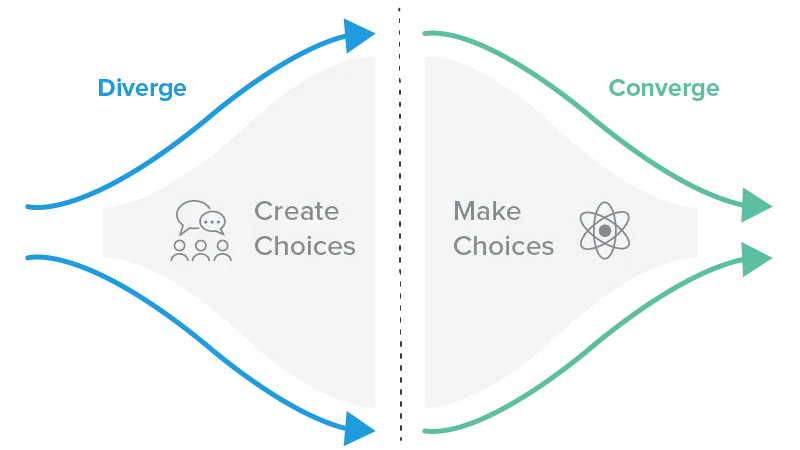With an abundance of citizen developer solutions coming to market, it's easy for cross-functional teams to get out of alignment. To be truly efficient and agile in the digital age, organizations must strive to break down those silos and a customer-focused approach can help.
Mind the Gap Between Departments
Today’s focus on Customer Experience (CX) has begun a revolution in the way companies do business. Historically, IT teams have been responsible for managing, maintaining and securing internally focused systems supporting key business functions. Many IT organizations were measured on operational efficiency and managing costs. However, today’s leading organizations have found their IT function must evolve alongside Marketing and other business units to provide the agility businesses need to grow and thrive in the digital age. To enable true innovation and grow the business, IT should be in lock step with the rest of the organization as a joint force to acquire and retain loyal customers. A profit center, rather than an expense or cost of doing business. Forrester Research coined the term “Business Technology” a few years back as a result of this evolution.
However, in the current age of digital transformation, with an abundance of low-code and SaaS solutions for business process automation, we still see many clients struggling with a growing lack of alignment. In order to add the most value in our consulting and technology engagements, we actively facilitate that alignment, using a customer-driven approach to break down silos and create new market opportunity within our clients’ companies.
Shift the Focus to the Customer
A great way to bridge the cross-departmental gap is to refocus everyone’s attention and energy toward the customer. If all are working toward a greater goal of attracting, satisfying, and retaining customers, two things can happen:
- Technology teams better understand requirements for systems that support the entire customer journey
- Non-technical teams better understand and can leverage capabilities of technology in their campaigns and programs
Type “Customer Experience” in your browser and you’ll find no shortage of content demonstrating the ROI of CX, and heightened performance of “Experience-Driven Businesses.” Chris Cancialosi on Forbes.com believes, as I do, that “Focusing on Customer Experience Is No Longer Optional.” However, a lesser talked element to this kind of business shift, is the dependence on alignment across the organization to find this success.
Collaborate on the North Star
One powerful, yet relatively simple, activity that we facilitate at the beginning of our client engagements to foster alignment is the collaboration of cross-departmental teams to create a “North Star Statement.” Think of it as a mission statement but singularly focused on an initiative, a program, or digital transformation goal. There are two key concepts that make up the foundation of this exercise:
- Empathy
- Divergence/Convergence Cycle of Design Thinking
Concept #1: Empathy
Microsoft CEO, Satya Nadella’s book “Hit Refresh” sheds some light into how—while staying true to the DNA of the Microsoft—he is transforming not just the business strategy but the culture as well. Think about Bill Gates’ vision from ~1980, “A computer on every desk, and in every home, running Microsoft software.” Contrast that with today’s mission statement from Satya, “…to empower every person and every organization on the planet to achieve more.”
Two very different visions of the future. This radical shift is due to a key concept in Satya’s life learnings– empathy. Having empathy for others – family, friends, employees, and ultimately business customers gives Microsoft employees and partners alike, a profound sense of purpose. This practice of empathy will be vital in understanding and ultimately providing the experience your customers desire.
Concept #2: Divergence/Convergence Cycle of Design Thinking
“Design thinking” is a human-centered process for creative problem-solving. The process involves generating as many ideas as possible (divergence) then narrowing the list down to the best idea (convergence).

Many times, you’ll see this as a two-step process represented by a double diamond to determine the right problem and craft the right solution.
The North Star Activity
In order to help clients create the North Star Statement for their digital transformation initiatives, we gather executive leaders from functional groups across the business including: Marketing/CX, IT, HR, Sales, Legal, Finance, Operations, etc. The intent here is to craft an aspirational statement that describes the vision for the initiative and purposefully includes the intended value to employees, customers, and the business.
To kickstart the collaboration, we typically have framed out a sentence structure/phrase that is relevant to the company with blanks for participants to fill in. Here’s a simplified version:
With this upcoming transformative initiative, our employees will ________ (value to the employees), and our customers will ________ (impact on the customer experience), which will ________ (outcome to the business).
Employing the first step of design-thinking, divergence, we begin gathering ideas. Each person receives this sentence structure and is given a couple minutes to fill in the blanks. This exercise not only creates a healthy list of ideas but is also a part of the coaching process we employ to get attendees to truly empathize with their employees and customers.
Next, we initiate the convergence step to narrow down the ideas generated, by pairing individuals from cross-functional teams and asking them to compare their sentences and collaborate on a new one. People in these pairs tend to have “Aha!” moments when they view an alternate vision from another department’s point of view. They also tend to re-direct themselves to show more empathy if need be. We continue combining teams to collaborate and co-create statements, until only two teams are left. Then, everyone in the room participates in the final round of collaboration to develop the team’s North Star. This statement is then memorialized in decks, on paper, in communications and other artifacts to reinforce the shared experience and customer-focused vision of the team.
Transform the Business and Your Culture
I absolutely love the energy of a cross-functional team collaborating to craft a North Star statement. It may sound simple but think about people in your organization who don’t have or don’t make the opportunity to work together, let alone create something together. They may never have a chance to empathize with and understand experiences of others. When I see that everyone around the table is engaged and vested in getting the vision right—sometimes even arguing over word choice—I know that the statement they craft is a going to be a good one that sticks. Everyone in the room will be its champion.
Just as Satya strives to transform the Microsoft business and culture, so do we for our clients. By breaking down silos in this North Star exercise, participants are also learning to transform their culture so that IT can work with cross-functional teams across the organization to reach their goals faster. If you’d like to learn more about our North Star exercise, reach out to us at marketing@valorem.com.






